In Photos: Early Medieval Village Discovered in Denmark
Farming remains
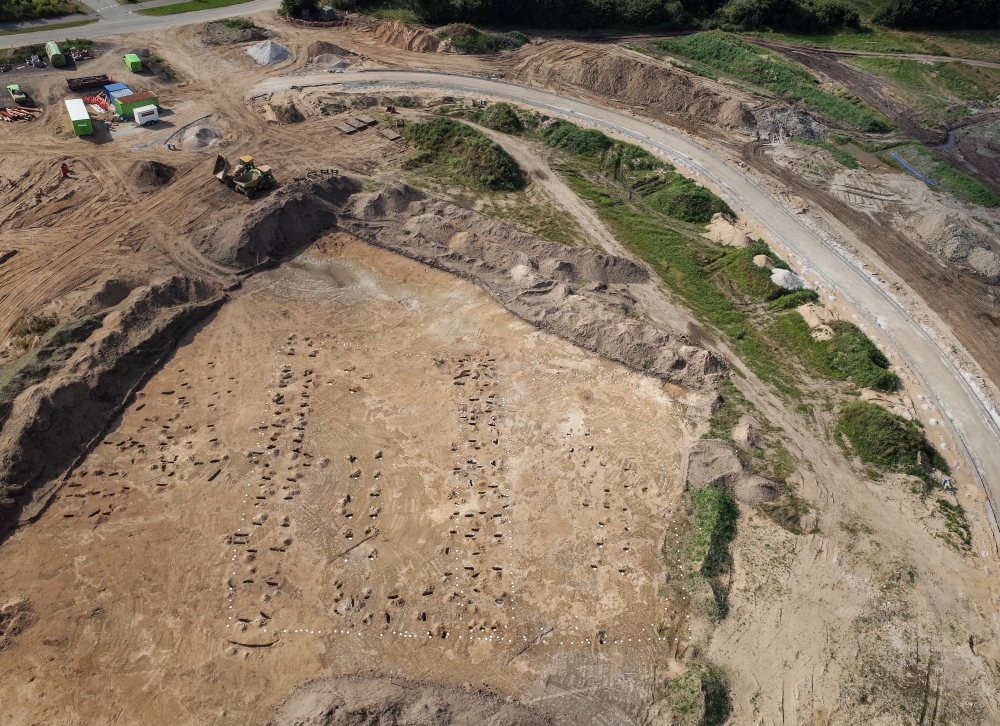
The remains of an early medieval farming village have been unearthed near the historic Danish town of Jelling, in central Jutland.
Archaeologists have dated the buildings on the site to between 300 AD and 600 AD, several hundred year before the development of Jelling as a center of Viking Age power by the Danish king Harald Bluetooth in the 10th century. [Read more about the early medieval village]
Pre-development studies
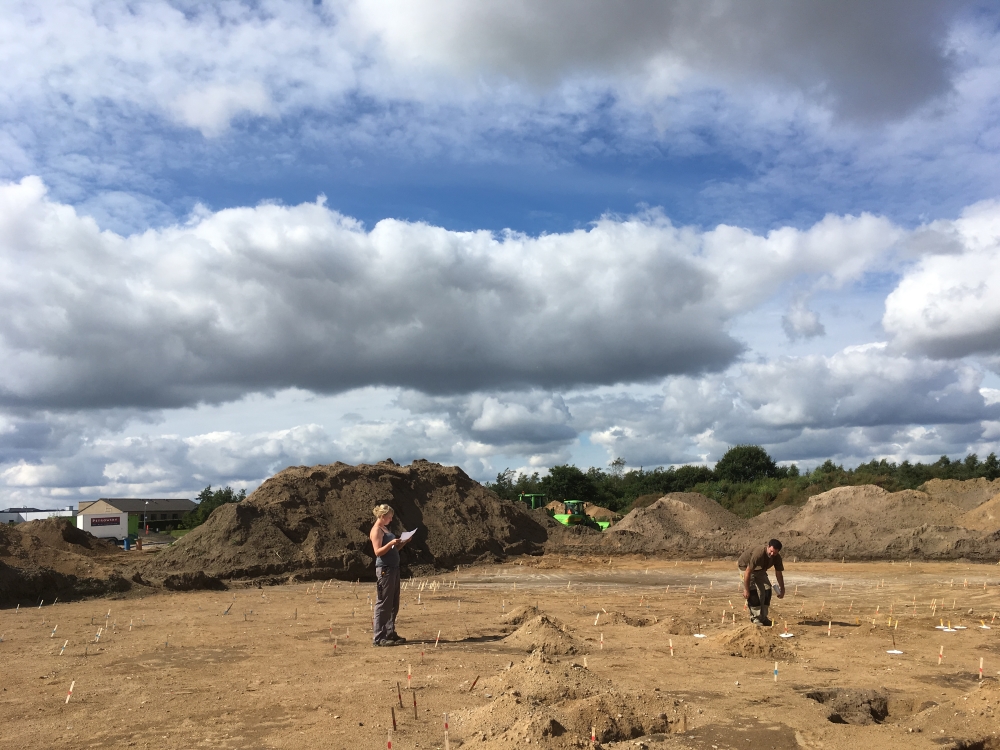
The land on the outskirts of modern Jelling was investigated by archaeologists ahead of its redevelopment as a modern suburb of around 40 houses by the local government of the area.
A team of up to five archaeologists from Vejle Museums in Southern Denmark spent the last year conducting excavations at the site.
Further scientific studies on their findings will continue for years to come.
Evidence of a settlement
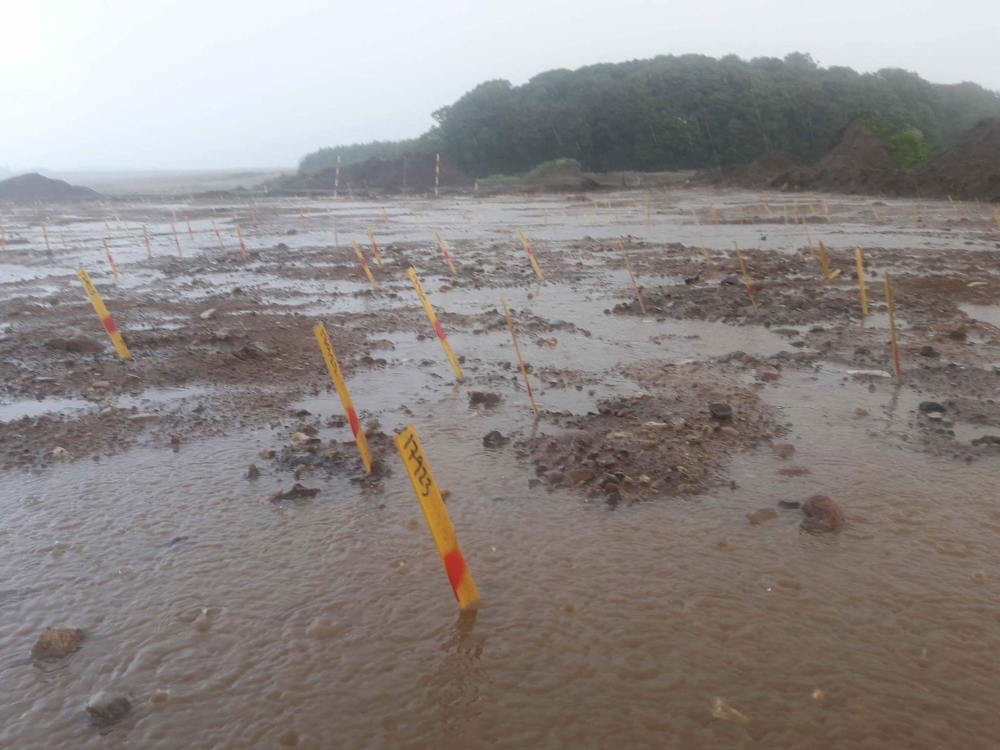
The main feature of the site is the remains of thousands of post holes from the hundreds of mainly wooden buildings that stood at some time in the village.
Only the outlines of the holes and mineral traces of the wooden posts that stood in them remain after the centuries underground.
Tens of thousands of holes
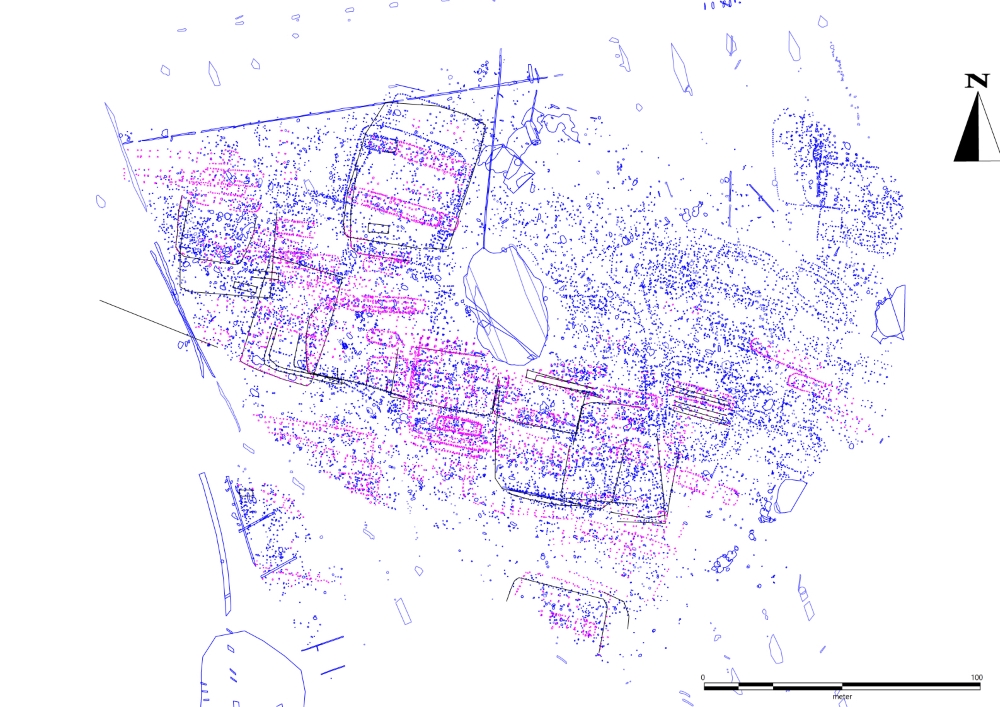
The archaeological team found 20,000 post holes from up to 400 buildings in the early medieval village, although not all the buildings were constructed or built at the same time.
Researchers say it is by far the largest early medieval village excavated in Denmark.
Family dwellings
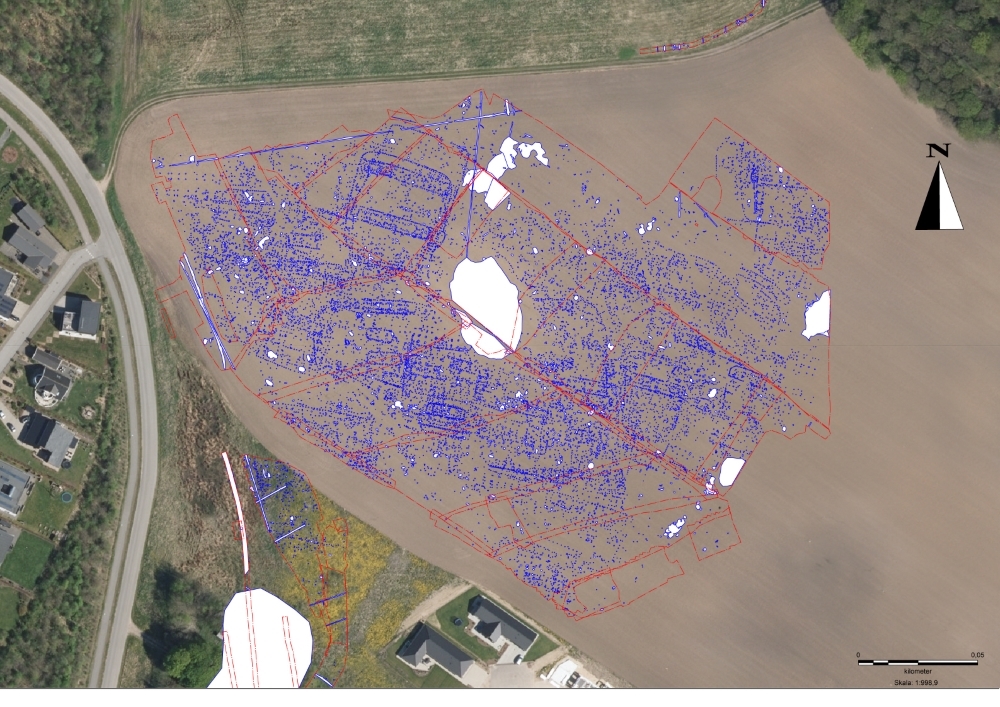
The researchers think the village was centered around 8 or 10 main longhouses.
Each longhouse would have been the center of a family farm, along with many smaller buildings such as granaries, workplaces and sheds.
Framing for perspective
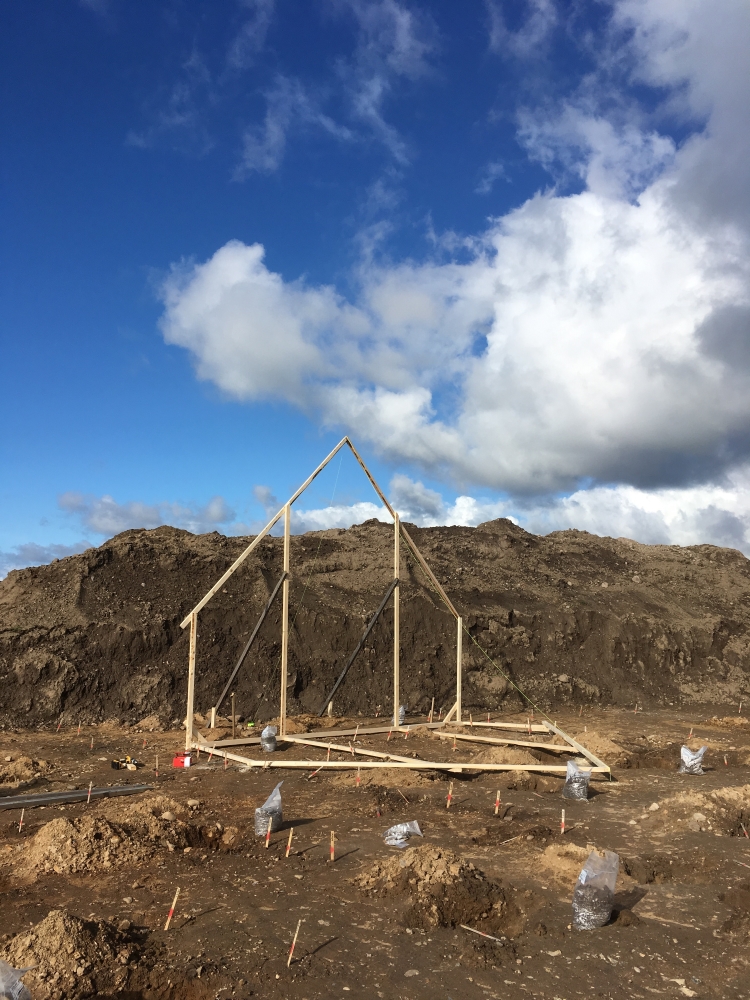
During the excavations the archaeological team from Vejle Musums used wooden frames to visualize the size of the buildings from the post holes.
The largest buildings, the longhouses, are about 33 meters (108 feet) long and 5.5 meters (18 feet wide).
Farming community
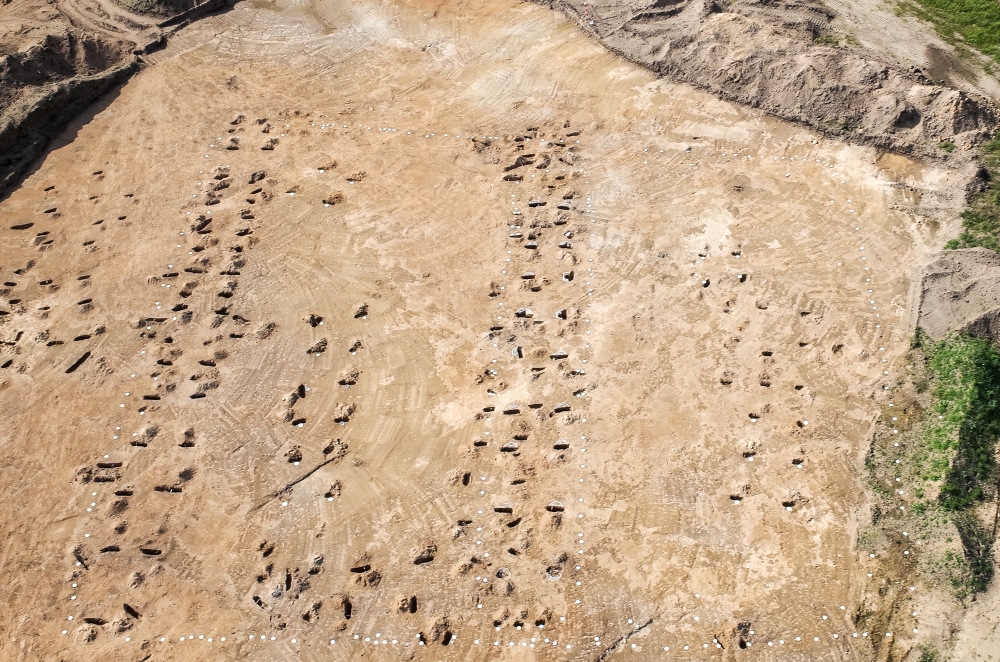
Archaeologists estimate that a typical longhouse would have been home to between 8 and 15 people, along with their farm animals, such as cattle, sheep and pigs.
The inhabitants would have farmed the land around their farmsteads, and grazed their animals in nearby pastureland and in open forests.
Get the world’s most fascinating discoveries delivered straight to your inbox.
Workshops
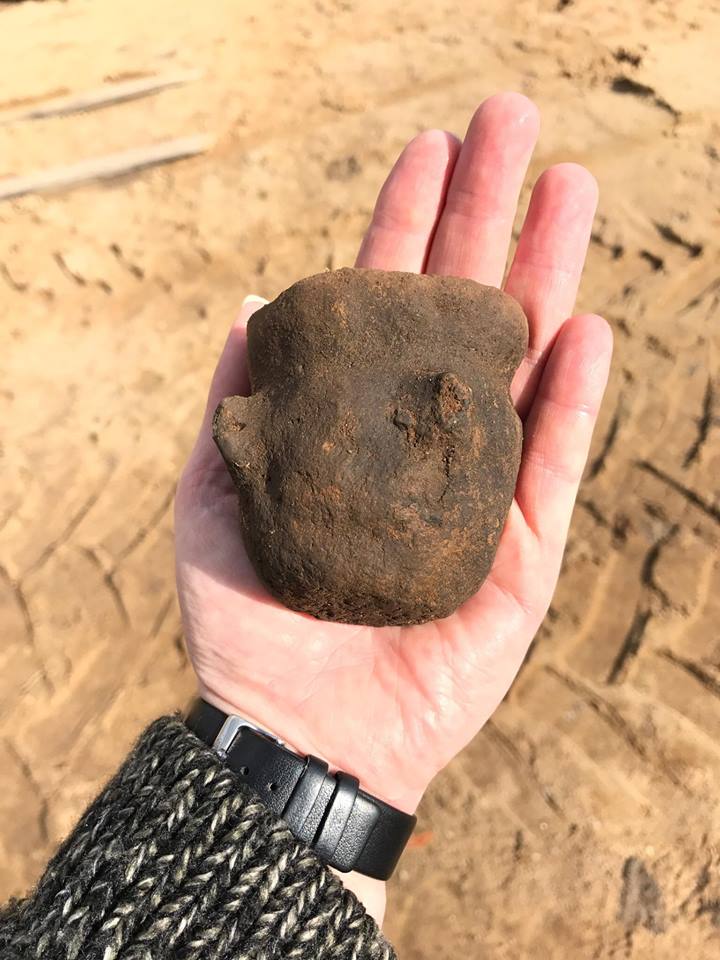
Some smaller buildings in the village may have been work places for making pottery or woolen fabrics, which were typical productions of the time.
This piece of pottery was found in one of the post holes.
There are also indications that iron was produced from bog soil in ovens at the site, and that one building may have been a smithy where the metal was worked.
Early medieval finds
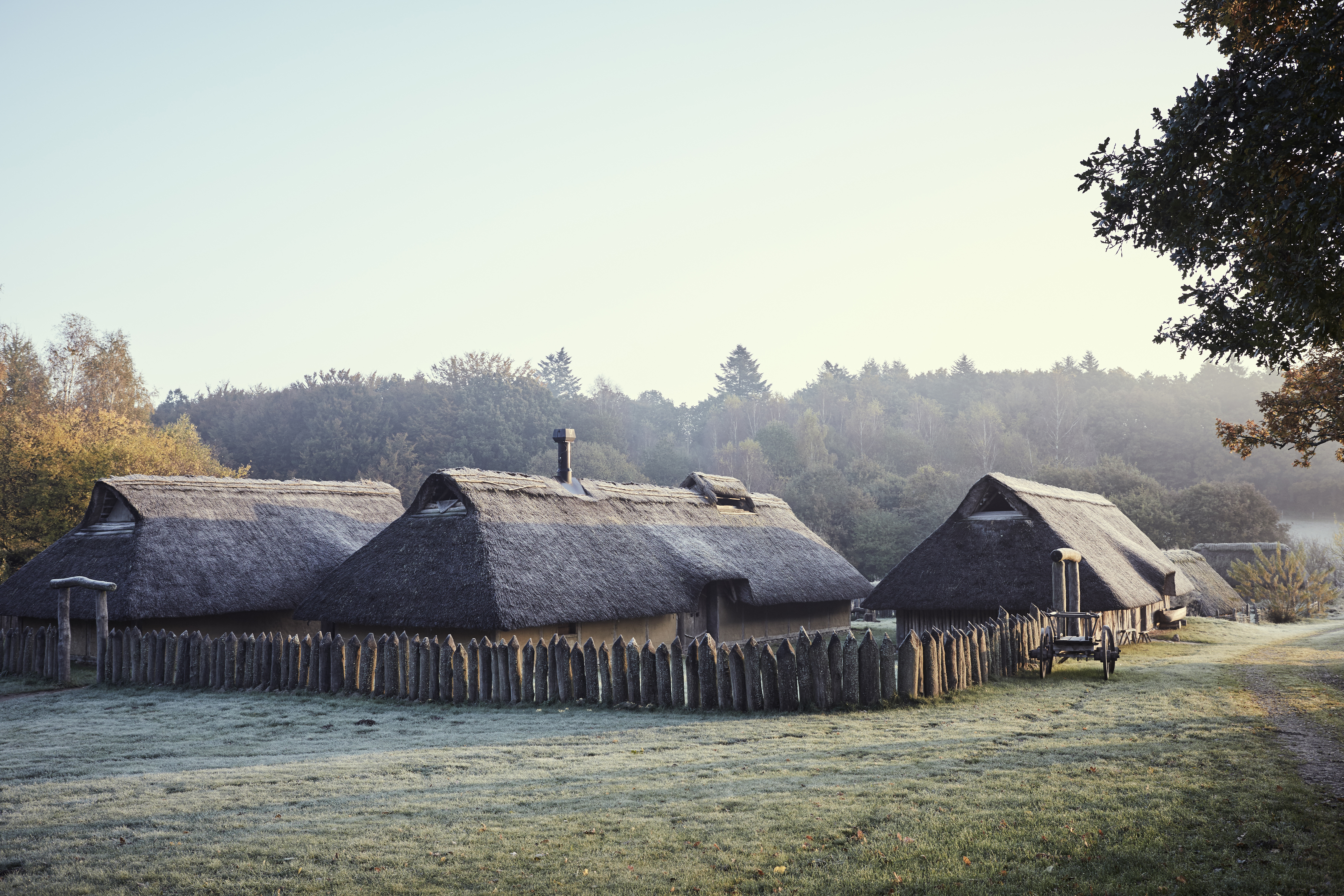
The new excavation at Jelling is the largest early medieval site found so far in Denmark, but several others from the same period are known.
This image shows a modern reconstruction of one such early medieval settlement, at Jernaldermiljøet in Vingsted, Denmark.
Older than Vikings
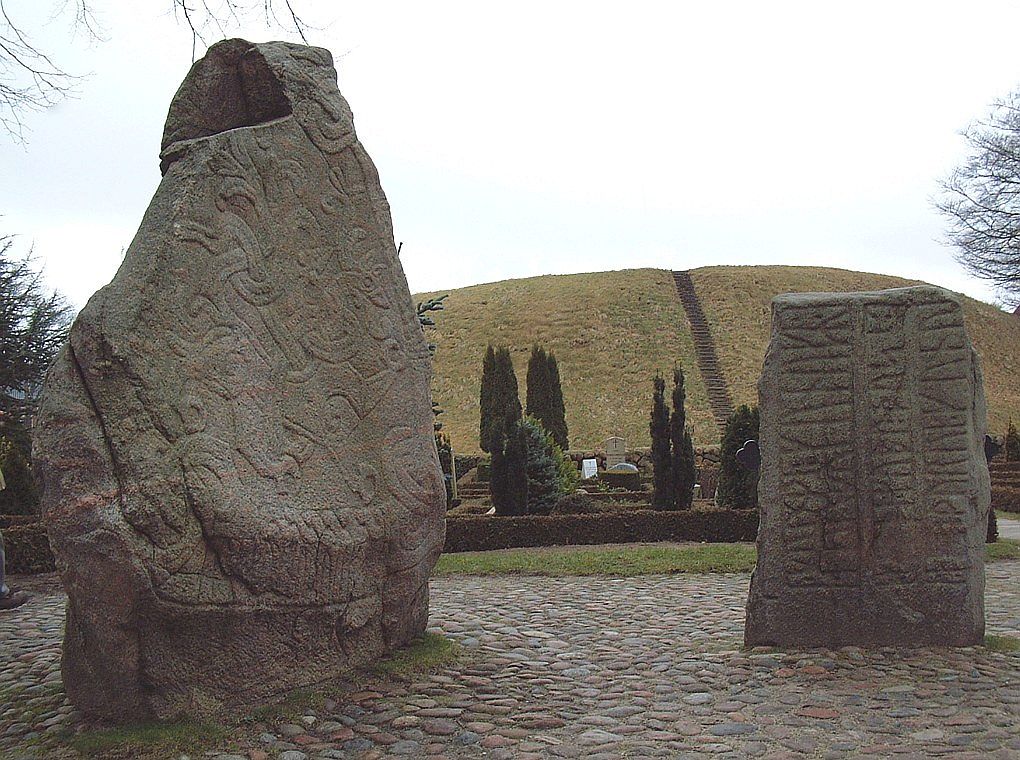
Jelling became a center of Viking power under King Harald Bluetooth in the 10th Century.
Bluetooth placed these runestones, known as the Jelling Stones, at the sire, to mark his introduction of the Christian religion to Denmark.
But the early medieval village excavated by archaeologists on the outskirts of the town predates the Viking era by many centuries, and is not thought to be directly connected. [Read more about the early medieval village]
Tom Metcalfe is a freelance journalist and regular Live Science contributor who is based in London in the United Kingdom. Tom writes mainly about science, space, archaeology, the Earth and the oceans. He has also written for the BBC, NBC News, National Geographic, Scientific American, Air & Space, and many others.


